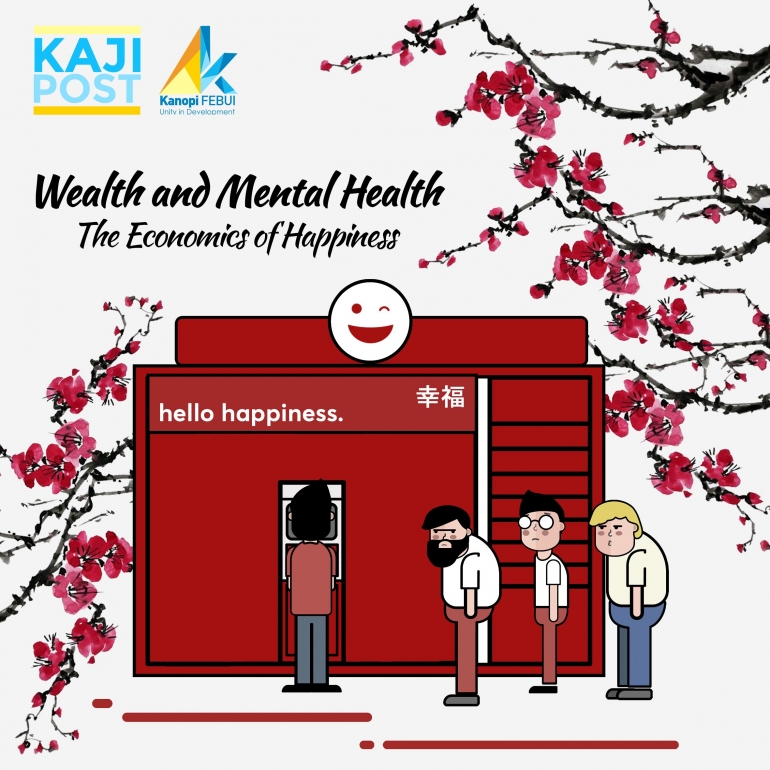A number of academicians have integrated the views from two different sides of the coin to reconcile the factors that contribute to the steep figure of suicide in Japan. Watanabe, et al. (2006), Chen, et al. (2009), and Andrs, et al. (2011) all found that better economic conditions like high level of income and high economic growth lower the level of suicide rate while income inequality and unemployment does the opposite.
The three groups also agreed that sociological factors have a profound impact on the suicide rate in Japan. While divorce rate is positively related to the suicide rate, birth rate or fertility has a negative impact on the suicide rate. The finding on the relationship of the suicide rate and divorce rate is based on a view in which divorce can be a traumatic event for the parties involved and affected. Such traumatic event is believed to tip the individuals towards isolation and results in reduced mental health. On the other hand, the reasoning for why birth rate or fertility is inversely related to the suicide rate is because the presence of children strengthens social integration---especially in families---which in turn decreases the likelihood of a person's committing suicide.
Moreover, the high suicide rates observed in the studies were hypothesized to be the after-effect of the economic recession that hit Japan in the 1990s called the "lost decade". Much like the unemployment rate, Japan's divorce rate rose significantly as the country enters the period of lost decade. Although the recession might not be fully responsible for the high divorce rate, it still brought upon economic difficulties that made the Japanese more prone to divorces. People also lost psychological support from their family and kinship ties post-divorce because of the social stigma about marriage that the Japanese people seem to have. These contribute to the heightened suicide rates in Japan three decades ago.
Suicide rates in Japan have shown three high points, as pictured in Figure 1. The second point was explained by the lost decade. The first high happened in the post-war era in which the suicide rate of Japan's demobilized soldier was one of the biggest contributors. The third high occured as the collapsing of some major financial institutions in Japan in 1997 led to debt insolvencies and eventually personal bankruptcies for many small business owners. Social stigma and depression linked to debt and bankruptcy in turn created a dramatic growth in suicides.
Figure 1 World Health Organization
Another factor that contributes to its high suicide rate is the severely competitive school and work environments in South Korea. This leads to intense stress that is visible even in pre-teen children and elderly residents. The suicide rate of the South Korean aged 65+ was the highest among all the age groups within the country in 2011. This might be due to the fact that the elders do not receive proper care---even from their own children; roughly half of them are poverty-stricken, a third of them do not receive state pension, and some of them have to work low-paying jobs to support themselves.
Figure 2 World Health Organization
Finding a way out
In 2008, the economic cost of depression-related suicides in Japan alone was as high as $ 2,542 million. Suicides also shorten life expectancy---measure of the quality of life in a society---at birth in Japan by 1.12% and 0.83% in South Korea. To lift the burdens of suicides and raise the well-being of their people, the governments of Japan and South Korea might need to learn from some successful sources. The lowest suicide rates by region are held by the Eastern Mediterranean countries.
The Eastern Mediterranean countries came together in 2011 and agreed on a set of resolutions to eradicate substance abuse and promote mental health in the region under their World Health Organization Regional Committee. One of their plans was to promote mental health literacy and even including the subject into basic curricula in universities. This strategy may be effective also in South Korea and Japan---where mental illness is still seen as a taboo---to encourage the people experiencing the symptoms to reach out for help. Aside from the cultural shift, governments of Japan and South Korea will also have to provide and ease the access to mental health care for their people.
In conclusion, now we know that although it is necessary, GNI per capita of a country alone is not sufficient to measure the well-being of the residents of that country. We need to take into account other socioeconomic and cultural factors. We might have heard the adage "Money can't buy us happiness."










